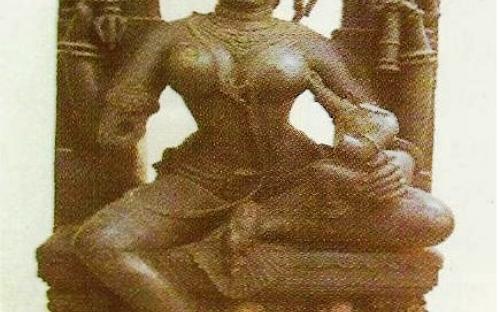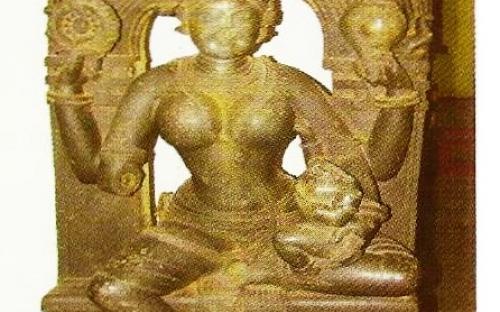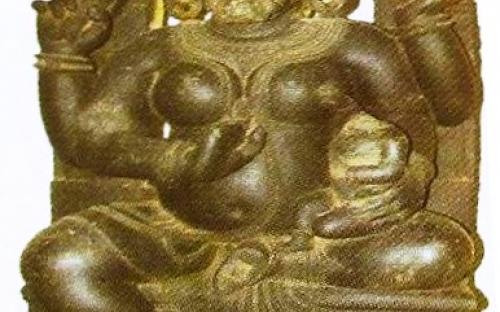Sapta Matrikas
You are here
Sapta Matrikas
We have only four Matrikas of the group of seven collected from the harmasala area of Cuttack district. They have been isplayed in the second hall of the Archaeology gallery. Apart from this group in the Odisha State Museum Saptamatrikas are also available in Jajpur, Bhubaneswar, Ranipur, Jharial, Belkhandi and Puri testifying the popularity of the cult in ancient and medieval Orissa.
The worship of female spirit in some form or ther can be traced to a very remote period, viz., he mother Goddess in the Indus valley culture and he Divine energy in vedic age. They become very prominent in Puranic age. lViarkandeya Purana informs us that the Mother Goddesses came into being to suck the blood of the demon Rakta-bija to death. When Chamunda and Kalaratri drank the blood of the demon, the Mothers danced in a circle. The mother Goddesses are principally seven but at mes raised to sixty-four when they assumed the ame of Yogins. Though most of the Puranas estrict the Mother Godesses to seven in number, he Varaha Purana describe them as eight representing eight aspects of Sakti. According to Varaha Purana, Yogesvari represents Kama or desire, (2) Mahesvari-Krodha or anger, (3) Vaisnavi¬lobha or covetousness, (4) Brahmani-Mada or pride, (5) Kaumari-Moha or illusion, (6) Indrani¬Matsya or false finding, (7) Yami or Chamunda¬Parsunya, i.e., tale bearing and (8) Varahi-Assya or energy.
The Agama gives briefly the general escription of these Goddesses in the following manner Brahmani should be sculptured like Brahma, Mahesvari like Mahesvar, Vaisnavi like Visnu, Varahi like a short woman bearing a plough as her weapon, Indrani like Indra and Chamunda as a terrific woman. This last Goddess should have dishevelled hair should possess a dark complexion and have four hands. She should wield the Trisula in one of her hands and carry a Kapla in another. All the matrukas are to be seated images and should have two of their hands held in the Varada and Abhaya poses while the other two hands should carry weapons approximate to their male counterparts. They are shown seated in padmasana in sculptures. The images of Sapta matrukas from Dharmasala area, which now find place in the Odisha State Museum are worthy of special notice. Only four of the Matruka figures namely, Vaishnavi, Varahi, lndrani and Chamunda have been brought to the Museum for display. The figures measure roughly 2'=6"X1'=6". The several decorative ornaments including the artistic crown, of the figures deserve attention. All the figures except Chamunda are having babies in their arms and lost in meditation.






